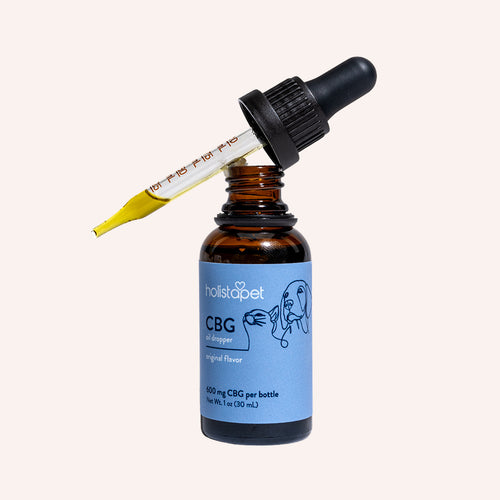If you notice hair loss on your cat's head or around its ears, you may become concerned about the change. If that is the case, it is a good idea to learn as much as possible about why this may have happened. There are several reasons for a cat losing hair on ears, many of which you'll be glad to hear are treatable with the right knowledge.
If you’re investigating the cause of bald patches on your cat, you’ve come to the right place. We understand how worrying it can be for owners, so we’ve created this comprehensive guide to support you and your feline friend. To identify the underlying reason for your pet's hair loss, read on for all the essential information and expert insights you need!
Understanding Hair Loss Around a Cat's Ears
Cats can experience hair loss for various reasons, some of which are hereditary, while others are acquired through environmental factors. Hereditary hair loss, caused by a cat's genetics, is not uncommon, although it is generally not ideal in most breeds and is usually difficult to prevent.
Acquired hair loss, while not necessarily abnormal, can sometimes be concerning. It often results from environmental irritants that cause cats to itch, scratch, or bite excessively, similar to how a human might scratch a mosquito bite too frequently. This excessive scratching can break the skin and lead to irritation, ultimately causing the fur to fall out.
Regardless of the cause, hair loss in cats should be investigated to ensure there are no serious underlying issues. Determining the cause may require some effort, but it is important to find out whether there is a need for concern, as hair loss in cats typically indicates an underlying problem.
Possible Causes For Cat Hair Loss Around The Ears
Cat hair loss can have many root causes. If your cat loses hair around its ears, this could be for many of the same reasons that bald spots form on other areas of your cat's body. However, there may also be some specific factors that could cause hair loss to manifest, specifically in the area around the ears. Some possible reasons why a cat may experience more than normal hair loss may be:

Mange
Also referred to as feline scabies, or Notoedres cati., mange is a parasitic mite. These mites burrow under the skin, creating itchy spots an affected cat is likely to scratch for relief. The ears are a common spot that mites will target, so often, hair loss will occur at this site. Mange is contagious and spreads itself quickly when not treated. Mange will be identifiable by crusted scabs with an appearance similar to eczema. These crusts can cause a great deal of hair loss if left untreated.
Fleas
Fleas may be another reason why your cat has thinning hair. Flea saliva is highly irritating and will cause skin inflammation in affected cats. The ears and top of your cat's head are the most vulnerable places for tick bites, so hair loss around the ears from fleas is not uncommon. Fleas can usually be identified by their physical appearance or potentially from the droppings they leave behind.
Food Allergy
Sudden hair loss may result from a food allergy. It's even possible that your cat could have developed an allergy to a food they have been eating for quite some time. An allergic reaction can result in serious hair loss and even significant skin irritation.
Chronic Stress
A stressed cat might experience hair loss if they are overly anxious or experiencing stress for a prolonged period. Stress can be less obvious to identify than physical causes but can still result in noticeable hair loss. A cat might comfort itself with excessive grooming when stressed, eventually leading to bald spots.
Ringworm
This name is a bit misleading, as Ringworm is an itchy fungal infection. Ringworm lives in hair follicles and feeds on dead cells to thrive. This infection causes the hair shafts to break away, sometimes leaving crusty, irritated skin behind. Ringworm is highly contagious and may spread easily from other cats.

Ear Mites
Ear mites cause severe itching and can result in hair loss around your cat's ears and other affected areas. This condition is contagious and will often be passed between cats. An ear mite infection will appear as itchy, red, irritated skin and hair loss around the ears due to itching.
Skin Conditions Related To Your Feline Pet's Hair loss
Various skin conditions can cause your cat to lose hair, leading to bald patches on your feline's ears or other affected areas. Some reasons for this hair loss might be related to a skin disease or other skin conditions that irritate your cat's skin. Common triggers include:
Severe Cat Acne
A hormonal imbalance or dirty ears can potentially lead to hair loss in cats. Cats experiencing abnormal hormone levels are more susceptible to severe acne, which may result in a stressed cat that begins excessive grooming of the affected areas. While many cats encounter cat acne at some point, it usually does not lead to significant hair loss. However, in cases where excessive licking occurs, your cat may develop bald spots, especially around the ears.
Dermatitis
Dermatitis, a common cause of cat hair loss, can be triggered by various environmental factors and is often considered a skin allergy. This condition may be an underlying cause of other skin problems and fur loss. Dermatitis can result from an allergic reaction to environmental allergens such as dust, mold, or the cat's exposure to specific foods, leading to your cat losing hair and experiencing skin inflammation.
Common Signs Of Skin Conditions
To identify the signs of a skin condition, some basic signs can be helpful to keep in mind:
- Head shaking
- Excessive licking
- Excessive scratching
- Dry skin
- Dull fur
- Scabs
- Dandruff
Finding The Problem
Identifying the root cause of your cat's hair loss is essential to providing the appropriate treatment and relief. Here are some practical tips to help you pinpoint the issue and start the healing process:
- Inspect Your Cat's Coat and Skin: Start by giving your cat's coat a thorough comb-through. Separating the fur allows you to examine the cat's skin closely, helping you identify any areas of irritation, bald spots, or redness that may be causing hair loss.
- Check for Signs of Irritation: Look closely at the skin surrounding the ears and other affected areas for signs of irritation, such as redness, swelling, or bumps. Identifying these issues early can help you address the underlying cause more effectively.
- Give a Gentle Bath: If you notice skin irritation, consider giving your cat a gentle bath using products containing natural ingredients like oatmeal, vitamin E, or Aloe vera. These can help soothe the skin, reduce itching, and provide relief, allowing the fur to start growing back.
- Provide a Calm Environment: Ensure your cat is relaxed before beginning any examination or treatment. A stressed cat may be more difficult to handle, making it harder to identify all the potential issues contributing to hair loss.

Will the Hair Grow Back?
In most cases, a cat suffering from bald patches or general hair loss will recover with the proper attention. In most cases where the cause of hair loss is properly treated, hair growth should resume within seven to ten days. If you keep your cat happy and healthy while providing the necessary treatment, then all you must do is wait, and your cat's coat should be back to its former glory in no time.
Prevention Tips
The best advice one can give regarding skin issues is to try to avoid them before they begin. Maintaining a clean environment for your cat the easiest and most effective way to prevent skin issues. It is equally necessary to be aware of the food you give your cat, avoiding ingredients commonly known to cause allergic reactions.
Grooming your cat can also help you keep closer track of your pet's coat condition. The more often you do this, the earlier you are likely to identify the emergence of a problem. Aside from that, grooming can help remove some potential irritants while giving you some quality time with your pet!
CBD can also be a good method to prevent hair loss by providing your pet with many nutrients essential for maintaining a healthy coat and skin. Keeping your pet on a consistent CBD regimen can also help lower their overall stress, making the likelihood of an irritation coming from anxiety less likely.
Treatment Options
Luckily, various treatment options are available for treating the common problems listed above. Each issue may have varying ways to treat the root cause of the irritation, but many ways to relieve the irritation can be used to treat various other issues as well. Some available treatment options include:
- Topical ointments
- Antibiotic ointment
- Lime sulfur dips
- Anti-inflammatory medications
- Hypoallergenic shampoos
- CBD Shampoo/topicals
- Antifungal shampoos
Holistapet's CBD for cat products can also provide assistance to calm and reduce irritation or stress. CBD can be mixed into various products, making it adaptable to any skincare regimen intended to reduce swollen, irritated, red spots. When applied to the skin through a shampoo or conditioner, CBD works to ease swelling and physical sensations of discomfort so your pet can enjoy relief from the constant itching and irritation.
CBD oil for cats or treats can also be given to a pet to lower the emotional stress of experiencing physical discomfort. CBD can also potentially provide relief for cats experiencing hair loss resulting from chronic anxiety. Holistapet's CBD Cat treats are made exclusively with all-natural ingredients and contain real Salmon, so your kitty is sure to enjoy munching down! Our CBD oil is made with hemp seed oil, so your cat's coat will see the full benefit of this amazing superfood.
Final Thoughts - Cat Losing Hair On Ears
A cat losing its hair can be stressful for all parties involved. It can be extremely uncomfortable for the cat to go through a long period with irritated skin, and for owners, it is disheartening to see your loved one's beautiful coat reduced. There are many reasons why a cat might lose hair on its ears, but luckily there are many ways to combat this hair loss, provided you are informed.
Taking preventative measures should reduce the likelihood of this occurring or reoccurring. Hopefully now if your cat suffers from hair loss, you'll be better equipped and have the knowledge to take care of these issues before they become dangerous.



 CBD Oil for Cats - Fast Acting
CBD Oil for Cats - Fast Acting
 CBD Cat Treats - Easy Dose
CBD Cat Treats - Easy Dose
 CBD Calming Chews for Cats - Highly Rated
CBD Calming Chews for Cats - Highly Rated
 CBG Oil for Dogs and Cats - Loved by Thousands
CBG Oil for Dogs and Cats - Loved by Thousands




1 comment
Deborah Sandness
What does the CBD oil cost?
Leave a comment
All comments are moderated before being published.
This site is protected by hCaptcha and the hCaptcha Privacy Policy and Terms of Service apply.